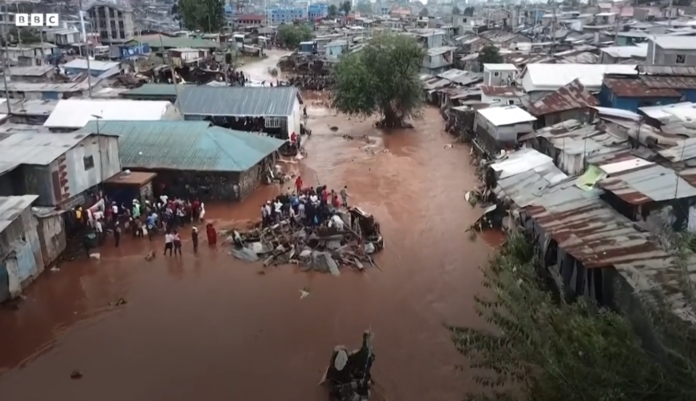
More than 40 people have died in Kenya after a dam burst following heavy rains and flooding, officials have said.
People in villages near Mai Mahiu, about 60km (37 miles) from the capital, Nairobi, were swept away as they slept.
“Forty-two dead, it’s a conservative estimate. There are still more in the mud,” Nakuru county governor Susan Kihika told AFP news agency.
More than 100 people have been killed in floods that have devastated parts of Kenya in the last month.
Rescue teams are digging through the mud in search of survivors in several villages, including Kamuchiri and Kianugu in Nakuru county.
Of the 42 bodies recovered so far, 17 were of children, police commander Stephen Kirui said, cited by Reuters news agency.
“The water came at high speed from Old Kijabe Dam and washed away many houses and vehicles. We have never seen such devastating floods since we were born here in Mai Mahiu,” David Kamau tod the BBC.
Another resident, Peter Muhoho, said that most of his neighbours were swept away in Kianugu, a village with about 18 homes.
“I was asleep when I heard a loud bang and screams. Water had flooded the area. We started rescuing people,” Mr Muhoho told the BBC.
Pointing to a bag he was holding, Mr Muhoho added: “This bag belongs to a chid I knew. He was washed away. I found it [the bag] downstream.”
The government has delayed the opening of schools across Kenya with more rain expected to come, according to forecasters.
More than 130,000 people have been displaced by the floods, with many people taking shelter in schools.
Heavy rains have also pounded neighbouring Tanzania and Burundi.
At least 155 people have been killed in Tanzania since January.
In Burundi, nearly 100,000 people have been displaced.
The number of casualties is unclear, but a UN-linked website reports that 68 people were killed in the capital, Bujumbura, on 10 February alone after heavy rains destroyed some 3,500 homes.
BBC Weather’s Chris Fawkes says that one of the biggest drivers of the rains is the Indian Ocean Dipole (IOD).
The IOD – often called the “Indian Niño” because of its similarity to its Pacific equivalent – refers to the difference in sea-surface temperatures in opposite parts of the Indian Ocean.
During a positive phase, the waters in the western Indian Ocean are much warmer than normal and this can bring heavier rain regardless of El Niño.
However, when both a positive IOD and an El Niño occur at the same time, as was the case last year, the rains in East Africa can become extreme.
One of the strongest positive IOD patterns on record coincided with one of the strongest El Niño patterns in 1997 and 1998, with severe flooding reported. These caused more than 6,000 deaths in five countries in the region.

